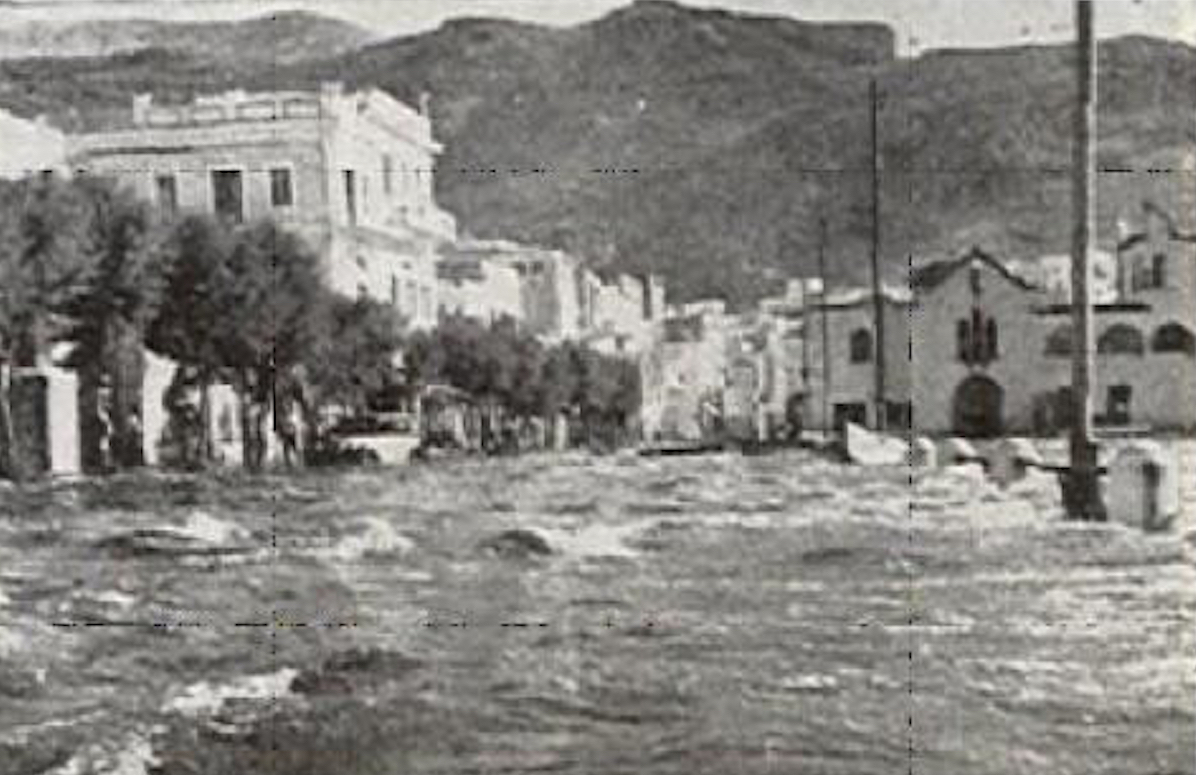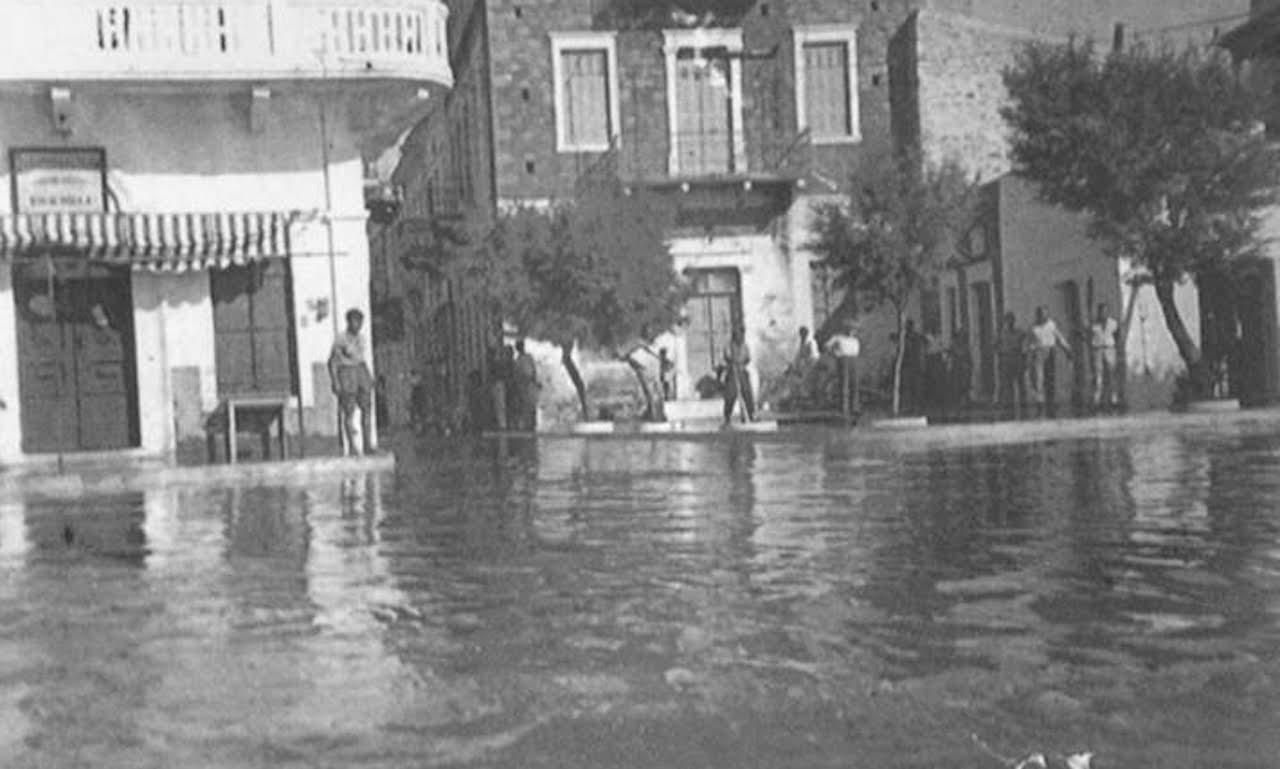Earthquake recorded in the Aegean Sea on July 9, 1956 at 3:11 GMT with epicenter about 5 km East/North-East from Santorini Island (M.7.8), is considered one of the strongest seismic events in Greece in the 20th century.
Tsunami waves generated by the main quake measured the highest run-up on the southern coast of the island of Amorgos ( named after the event) reaching 25m in height.
The tsunami affected all Aegean islands. The northern coasts of Crete were heavily damaged, in Kalymnos (Calimno) sea retreat followed by a tsunami, invaded the whole city of Pothea (about 1.5 km from the coast) causing heavy damage to housing and port facilities due to the strong pressure exerted by the sea. There were 53 victims and over 100 injured.
Reference:
• Ambraseys, N.N., The seismic sea wave of July 9, 1956, in the Greek Archipelago. Journal of Geophysical Research, vol. 65, no. 4, p. 1257-1265. DOI:10.1029/JZ065i004p01257
• Papadopoulos, Gerassimos A., and B.J. Chalkis, Tsunamis observed in Greece and the surrounding area from antiquity up to the present times. Marine Geology, vol. 56, issues 1-4, April 1984, p. 309-317
• Maramai, A., Graziani, L., Brizuela Reyes, B. (2019). Euro-Mediterranean Tsunami Catalogue (EMTC) (Version 2.0). Istituto Nazionale di Geofisica e Vulcanologia (INGV). https://doi.org/10.13127/tsunami/emtc.2.0




